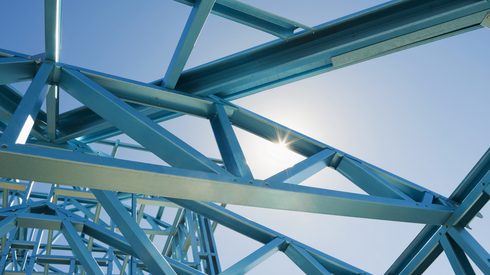Yogesh Bedi, chief of Tata Steel Recycling Business, told Fastmarkets the company was in the final stages of commissioning a shredder, which would let the company offer domestically produced shredded scrap from April onwards.
The initial capacity of the shredder is 350,000 tonnes per year, with plans to increase volumes in the coming year.
Since 2020 Tata Steel Recycling Business has been offering 150,000 tonnes per year of baled ferrous scrap under the Tata FerroBaled name, made using CRC trimmings.
Shredded ferrous scrap, made from obsolete and end-of-life vehicle (ELV) scrap, will be offered to the market under the Tata FerroShred brand name.
Bedi said that while there has been an increase in steel production in the country, there has also been a move toward using domestic scrap, citing the very volatile import markets that currently have long lead times, currency fluctuations and are of uncertain quality.
Fastmarkets weekly index for steel scrap shredded, index, import, cfr Nhava Sheva, India was $443.3 per tonne on April 1, up from $423.29 per tonne one week previous.
“There is a shift toward the domestic scrap industry due to significantly shorter lead times, lower inventory carrying costs and insulation from currency fluctuations,” he said.
The Indian government has also introduced various policies that will boost the domestic scrap industry, of which Bedi said are likely to include invitations to invest in infrastructure, vehicle dismantling and steel scrap processing.
One of the policies is the long-awaited ELV scrappage policy, which will encourage the shift to newer, more environmentally friendly vehicles, while removing older vehicles from the roads.
Bedi said the vehicle scrappage scheme would generate about around four million tonnes per year of ferrous scrap, rising to 10 million tpy by 2025, which would be in line with the demand for scrap from the steady growth of India’s secondary steel industry.
Currently, around 5-6 million tonnes of the country’s annual demand for ferrous scrap of 25-30 million tonnes is imported.
“Global studies suggest that steel scrap availability follows the development cycle of any country with a lag of 15-20 years. India’s growth [began to speed up in the] early 2000s; this would mean that 2020-2025 will be a point of inflexion for the Indian scrap industry,” Bedi said.
“The timely policy interventions by the government is a definitive step… to boost the domestic scrap industry and reduce India’s dependence on imports,” he added.
India’s National Steel Policy aims to cut the country’s reliance on imports via the domestic production of more steel, with the aim of raising its steelmaking capacity to 300 million tonnes per year by 2030.
The country produced 99.57 million tonnes of crude steel in 2020, down by 10.6% from 111.35 million tonnes in 2019, according to Worldsteel data.




